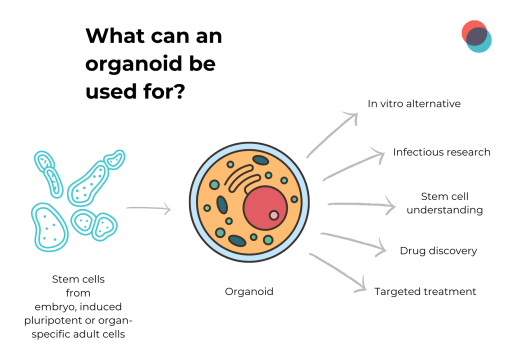From organisms to a petri dish: cell structures named Organoids
March 15th, 2022, by Labtoo's team
What is an organoid?
An organoid is a small self-organized 3-dimensional tissue culture, halfway between 2-dimensional stem cells and a full organ or tissue.
Using stem cells, that can be induced to divide in different types of cells, scientists can grow organoids. By putting them in the adequate environment, they will develop their own genetic instructions and self-organize in small structures.
So far, scientists have been able to grow organoids resembling brain, kidney, lung, intestine, stomach or even liver. They can be used as alternatives to in vivo and to provide better insights than in vitro models.

What can an organoid do?
Thanks to those smaller organ and tissue models, scientists can better grasp the complexity of diseases, pathologies, or infections.
Also, because organoids come from stem cells, scientists have been able to understand how those stem cells know what they need to grow. It has been found that with the correct factors and compounds, stem cells understand what they need to grow.
Another aspect is the use of organoids in drug discovery. The idea is that with such models, research would be faster and generate a much more personalized medication. In other words, using a patient’s own cells would allow the production of better-targeted treatments.
What about limitations?
Of course, there are limitations to the use of organoids. Even with all the development that occurred in the past few years, organoids are just small representations of full-functioning organs and tissues. It is therefore not yet possible to completely replace in vivo studies with organoid studies. But organoids should be seen as a separate tool or a different approach within the R&D program.
How Labtoo supports the development of organoid usage for R&D?
Whenever an organoid model needs to be developped from adult tissues, the first thing to do is to procure the biological samples. Labtoo can support researchers by putting in place a specific supply chain for specific fresh or frozen tissues, through our specimen procurement service.